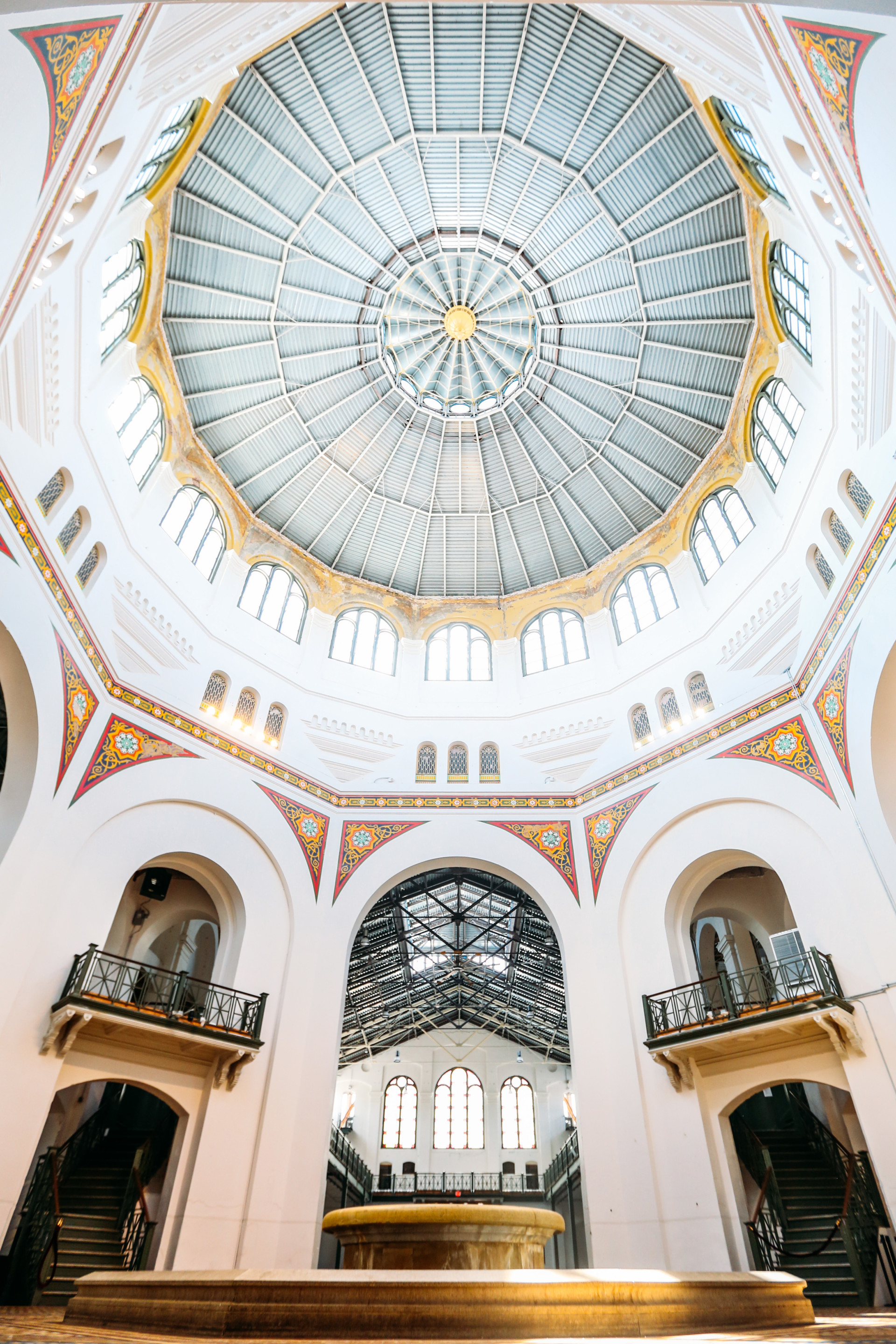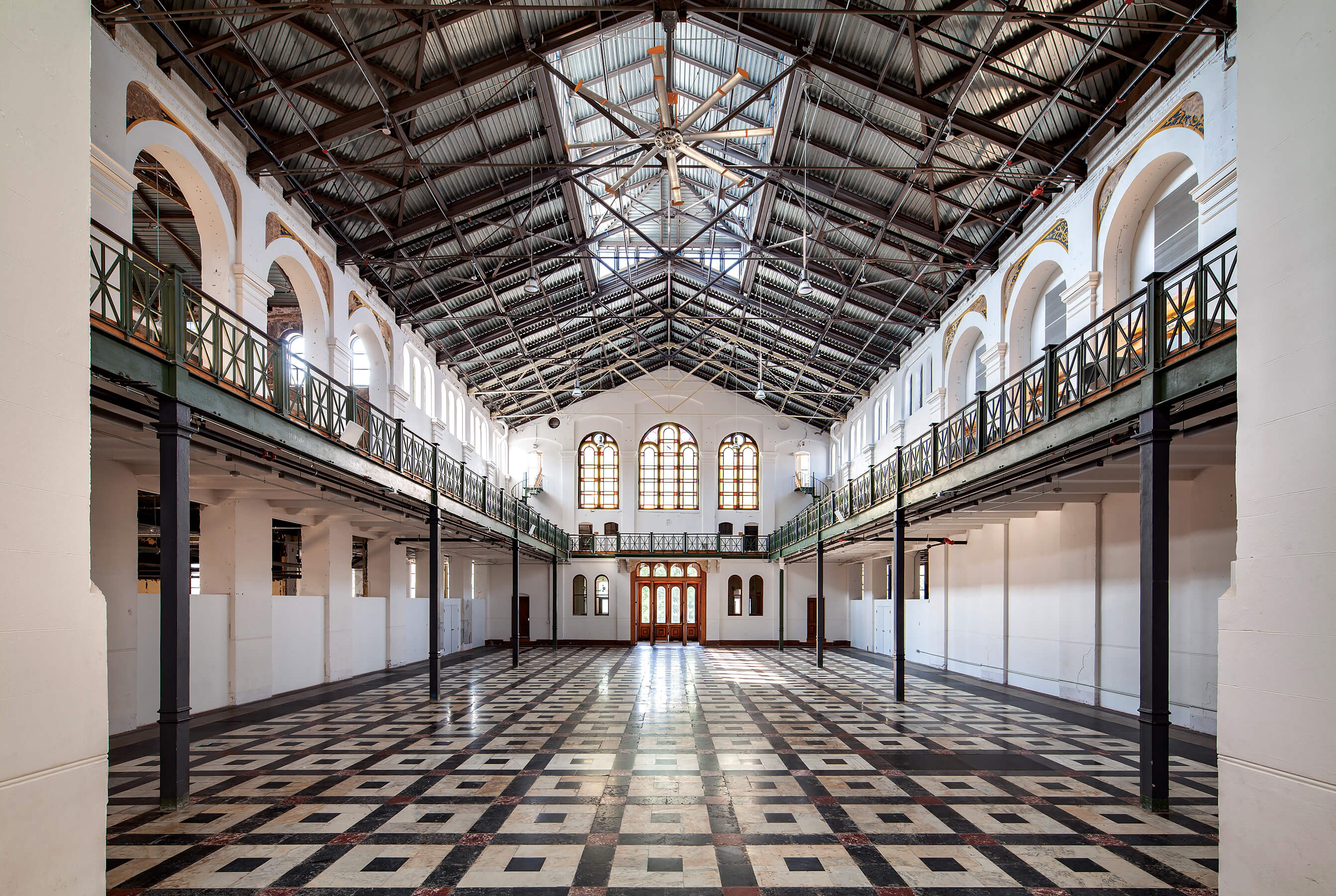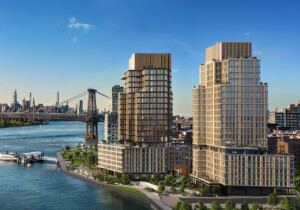The Smithsonian’s Arts + Industries Building (AIB) is the American museum. When it opened in 1881 on the National Mall in Washington, D.C., it was the first U.S. National Museum, and according to the Smithsonian Institution, introduced generations of Americans to new inventions like the lightbulb and modern rocketry. However, like much of the rest of the aging Smithsonian’s D.C. campus, the AIB is in dire need of repair and shut its doors in 2004 over structural concerns.
Today, however, the Smithsonian announced that the powerhouse of American science and industry would be reopening for the institution’s 175th anniversary with a comprehensive survey of the future designed by Rockwell Group. From November of this year through July 2022, the AIB will present FUTURES, an exhibition not only showcasing art and technology of “the future” but the fruits of research and initiatives from across the Smithsonian’s 23 museums. The message and venue send a clear message—the Smithsonian is positioning itself as an engine of the future.
The actual FUTURES show itself will span four separate zones, one in each of the AIB’s halls, across 32,000 square feet. A total of 150 items touching on everything from space exploration to AI to speculative Afrofuturism will be on display in every medium. Of course, the future isn’t always the “future;” to understand how we got where we are and where things are going, it’s necessary to interrogate the past. That’s why in Past Future, visitors will be able to view items that helped create our current industrialized society, from the Bakelizer (the 20th-century machine that produced Bakelite, the first mass-produced plastic), to a prototypical telephone designed by Alexander Graham Bell, to Octavia Butler’s typewriter, and historic activist art of the time.

In Futures that Inspire, the Smithsonian will be displaying examples of futuristic worldbuilding including Indigenous storytelling in the contemporary age; in Futures that Unite, items such as a robot for reducing COVID-induced loneliness and more that bridge the digital (and physical) barriers between us will be on view, and in Futures that Work, visitors can expect to see practical applications of future technology, such as a carbon sequestering algae bioreactor, a formfitting spacesuit, and similar items (with some likely drawn from the Cooper Hewitt’s 2019 Nature—Cooper Hewitt Design Triennial).
“In a world that feels perpetually tumultuous, there is power in imagining the future we want, not the future we fear,” wrote Rachel Goslins, director of the AIB, in an announcement. “For 175 years, the Smithsonian has been helping people better understand who we are, where we have been, and where we want to go. With FUTURES, we want to invite all visitors to discover, debate, and delight in the many possibilities for our shared future. There’s no place better to do this than in the Arts + Industries Building, the nation’s original home for big ideas.”
The institution is also touting that the show will see the debut of a number of never-before-presented pieces, including Buckminster Fuller’s first full-scale geodesic dome, a Planetary Society LightSail (which could ultimately reach other star systems), internet balloons, and more. Even the exhibition design itself is purportedly high-tech and aspirational, as the Smithsonian noted Rockwell Group will use mycelium bricks, 100 percent recycle materials, and solar cells to create sustainable and interactive pavilions and staging in each wing.

FUTURES is being touted not only as an exhibition but also as a festival of the future. While more information on the accompanying companion app, site-specific installations, large technology projects, and live events has been teased, concrete details will only be released in the months leading up to November. The Smithsonian will also use the opportunity to showcase stories from makers and inventors of the past and present who are working to build a more equitable world.
Of course, it makes sense that the Smithsonian would be light on details at the moment; the Cooper Hewitt in Manhattan has been closed since March of 2020 to prevent the spread of COVID, and other Smithsonian museums have closed and reopened sporadically as infection rates have risen and fallen. Setting a date for a large-scale exhibition is something of a called shot at this point when vaccine rollout is still dragging across the U.S.















